#automated irrigation
Explore tagged Tumblr posts
Text
Why Irrigation Reels Are Essential for Sustainable Farming in Priddy, TX
The portable system designed to distribute water uniformly in large fields is irrigation reels. They come with a pipe or hoses and a sprinkler cart that retracts sumptuously, which gives precise water delivery coupled with less wastage. Farmers can adjust the irrigation reel to satisfy what they need during their steady-cropping period to ensure that the crops get enough water without making the ground so wet.
Read More : https://bondhusova.com/blogs/205039/Why-Irrigation-Reels-Are-Essential-for-Sustainable-Farming-in-Priddy

0 notes
Text
Insoma Automatic Water Timer Intelligent Irrigation Watering System Sprinkler Timer Garden Programmer Equipment IPX7 LCD Display https://s.click.aliexpress.com/e/_oplZRaY
0 notes
Text
Automated Irrigation Should Adjust To The Weather.
Some irrigation becomes temporarily obsolete through the rainy season. Now that it has started to rain, what should be done with automatic watering systems? In almost all situations, automatic irrigation systems should be adjusted to accommodate for moisture provided by rain. If rain is sufficient to provide enough or too much water, irrigation can be discontinued until needed again when the…

View On WordPress
0 notes
Text

Variable Frequency Drive (VFD) bypass solution for fan & pump control with Direct on Line (DOL) versatility.
VFD control - Hand / Auto:
Allows manual VFD control to easily be selected in the event of an automatic control system failure, simplified commissioning and system checks, or when a fast temporary override of the control system is required. An integrated auto control selection allows return to automatic system control just as easily.
Electrical Wiring - VFD / OFF / Bypass:
Simple, reliable 3 position switch allows fast transistor from running the motor DOL or with the VFD.
#optipass#invertek#variablefrequencydrive#vfd#acdrives#invertekdrives#automation#fan#pump#hvac#agriculture#farming#farms#grain#irrigation#sawmill#machine#bypass#nema#inverter#torque#speed#electrical#voltage#amperage#frequency
0 notes
Text
Irrigation Automation Market Trends: Global Industry Overview

High productivity offered by automated irrigation systems and growing investment in smart agriculture is expected to drive the Global Irrigation Automation Market growth in the forecast period, 2024-2028.
According to TechSci Research report, “Irrigation Automation Market – Global Industry Size, Share, Trends, Competition Forecast & Opportunities, 2028”, the Global Irrigation Automation Market stood at USD 3.86 Billion in 2022 and is anticipated to grow with a CAGR of 12.21% in the forecast period, 2024-2028. The primary drivers of the Global Irrigation Automation Market include the following: an increase in population leading to greater demand for food, the need for efficient water use due to water scarcity, technological advancements making automated irrigation more accessible and easier to use, the shift towards mechanized agriculture for enhanced crop yield, and supportive government initiatives promoting sustainable farming practices. Due to these factors, more and more farmers are adopting irrigation automation, propelling the growth of the market.
The global market for irrigation automation is experiencing remarkable growth, driven by the increasing challenges of water scarcity, the need for improved crop yields, and ongoing technological advancements. The introduction of innovative solutions like remote access, smartphone applications, and cloud-based systems is revolutionizing irrigation management for farmers and agricultural businesses. These cutting-edge technologies are leading to enhanced operational efficiencies, optimized resource utilization, and significant reductions in water consumption.
Browse over XX market data Figures spread through XX Pages and an in-depth TOC on "Global Irrigation Automation Market” https://www.techsciresearch.com/report/irrigation-automation-market/4925.html
Looking ahead, there is expected to be a surge in demand for advanced irrigation systems, particularly in regions facing severe water scarcity or with large-scale agricultural operations. As the world grapples with the pressures of food security and sustainable water management, the adoption of smart irrigation automation solutions becomes increasingly crucial. By enabling precise water distribution, real-time monitoring, and intelligent decision-making, these systems empower farmers to maximize crop productivity while minimizing water wastage, ultimately contributing to a more sustainable and resilient agriculture sector.
The scarcity of freshwater resources in arid and sparsely urbanized regions, along with advancements in greenhouse projects, has led to increased reliance on automated irrigation techniques. This includes the use of devices like controllers and sensors that assist in efficient water spraying and reduce water wastage. Mechanized agricultural activities and the adoption of advanced technologies to reduce labor costs are the key drivers behind the demand for these solutions. The utilization of smart technologies allows for monitoring of weather changes, soil conditions, water levels, and watering schedules in the context of the irrigation system. This is expected to drive the demand for advanced irrigation techniques. Water conservation is a critical aspect that promotes the use of these techniques and devices among farmers.
Furthermore, government support in the form of subsidies for the purchase of drip and sprinkler systems has facilitated market growth. The increasing use of controllable smart sprinklers that respond precisely to weather conditions offers profitable opportunities. These sprinklers provide benefits such as crop protection and efficient yield utilization.
For instance, the Indian government has implemented a centrally sponsored micro-irrigation scheme to assist smallholder farmers in implementing agricultural practices. This program aims to promote water use efficiency by encouraging technological interventions like drip and sprinkler irrigation techniques. The significant shift towards the use of drippers and sprinklers for water efficiency is expected to drive business growth and enable farmers to focus on water conservation, providing ample opportunities for market expansion in the forecast period.
The Global Irrigation Automation Market is segmented into component, system type, automation type, irrigation type, end user, regional distribution, and company.
Based on end user, the agricultural sector currently dominates the industry, thanks to the widespread adoption of smart technologies that promote efficient water usage and improve crop yields. This remarkable dominance can be attributed to the constant drive for innovation in agricultural practices. However, it's important to note that the non-agricultural sector is also experiencing substantial growth. This sector encompasses various areas such as residential and commercial lawns, golf courses, public parks, and even urban landscaping. The demand for landscape aesthetics in these areas has been steadily increasing, leading to a surge in their development. Moreover, the necessity for water conservation in urban areas has further fueled the growth of the non-agricultural sector.
This balanced growth between the agricultural and non-agricultural sectors plays a crucial role in ensuring sustainable development and environmental preservation. It allows for the efficient use of resources while meeting the aesthetic and recreational needs of communities. The continuous innovation and integration of smart technologies in both sectors are paving the way for a greener and more sustainable future.
Based on region, the Asia-Pacific region is at the forefront of the Global Irrigation Automation Market for several key reasons. Firstly, this region is home to some of the world's most populous nations, such as China and India, which have a substantial need for increased agricultural output to support their growing populations. This demand has driven the adoption of irrigation automation systems, as they enable efficient and precise irrigation practices to maximize crop yields. Additionally, the Asia-Pacific region has witnessed a significant surge in the adoption of advanced agricultural technologies. Supported by government initiatives that aim to modernize farming practices, farmers in this region have embraced irrigation automation as a means to optimize water usage, reduce manual labor, and enhance overall productivity. This shift towards automation not only improves efficiency but also enables farmers to make data-driven decisions for better crop management.
Furthermore, the Asia-Pacific region faces unique challenges related to water scarcity. With certain areas experiencing limited water resources, the need for precise and targeted irrigation methods becomes even more crucial. Irrigation automation systems offer the ability to monitor soil moisture levels, weather conditions, and crop water requirements, allowing farmers to implement precise irrigation schedules and conserve water resources effectively. Considering these factors, it is evident that the Asia-Pacific region is leading the way in the Global Irrigation Automation Market. The combination of high demand for agricultural output, the drive towards technological advancements, and the necessity to conserve water resources has propelled the adoption of irrigation automation systems, making this region a significant player in the market.
Major companies operating in Global Irrigation Automation Market are:
The Toro Company
Hunter Industries
Valmont Industries Inc.
Rain Bird Corporation
Lindsay Corporation
Rubicon Water
Weathermatic
Nelson Irrigation
Avanijal Agri Automation Pvt Ltd.
Irritec S.P.A
Download Free Sample Report https://www.techsciresearch.com/sample-report.aspx?cid=4925
Customers can also request for 10% free customization on this report.
“The future of the Global Irrigation Automation Market appears promising and is expected to witness significant growth in the coming years. This growth can be attributed to a multitude of factors. The escalating pressure to optimize water usage in agriculture, driven by the alarming rise in water scarcity, will act as a catalyst for market expansion. The need to efficiently manage and conserve water resources has become paramount, making irrigation automation an indispensable solution for sustainable agriculture. The market will be propelled by continuous advancements in technology. The development of smart irrigation systems, leveraging the power of the internet of things (IoT), will revolutionize water management practices. These intelligent systems will enable precise and automated control of irrigation processes, ensuring optimal water distribution and minimal wastage.
The integration of sensors, weather forecasting, and data analytics will further enhance the efficiency and effectiveness of irrigation systems, resulting in higher crop yields and resource conservation. The Global Irrigation Automation Market is poised for remarkable expansion in the coming years. The convergence of factors such as the need for water optimization, technological advancements, and government support will fuel the adoption of irrigation automation solutions worldwide. These transformative technologies will not only address the challenges posed by water scarcity but also contribute to the development of sustainable and resilient agriculture systems for a greener and more prosperous future.,” said Mr. Karan Chechi, Research Director with TechSci Research, a research-based management consulting firm.
“Irrigation Automation Market - Global Industry Size, Share, Trends, Opportunity, and Forecast, 2018-2028 Segmented By Component (Controllers, Sensors, Weather-Based, Soil-Based, Fertigation Sensors, Valves, Sprinklers, Others), By System Type (Automatic and Semi-Automatic), By Automation Type (Time-Based, Volume-Based, Real-time Based, Computer-Based Control System), By Irrigation Type (Sprinkler, Drip, Surface, Lateral Move), By End User (Agricultural and Non-Agricultural), By Region and Competition”, has evaluated the future growth potential of Global Irrigation Automation Market and provides statistics & information on market size, structure and future market growth. The report intends to provide cutting-edge market intelligence and help decision makers take sound investment decisions. Besides, the report also identifies and analyzes the emerging trends along with essential drivers, challenges, and opportunities in Global Irrigation Automation Market.
Browse Related Reports
Plant Hormones Market https://www.techsciresearch.com/report/plant-hormones-market/20671.html Feed Palatability Enhancers Market https://www.techsciresearch.com/report/feed-palatability-enhancers-market/20650.html Household Insecticides Market https://www.techsciresearch.com/report/household-insecticides-market/20656.html
Contact
Techsci Research LLC
420 Lexington Avenue, Suite 300,
New York, United States- 10170
Tel: +13322586602
Email: [email protected]
Website: www.techsciresearch.com
#Irrigation Automation Market#Irrigation Automation Market Size#Irrigation Automation Market Share#Irrigation Automation Market Trends#Irrigation Automation Market Growth
0 notes
Text
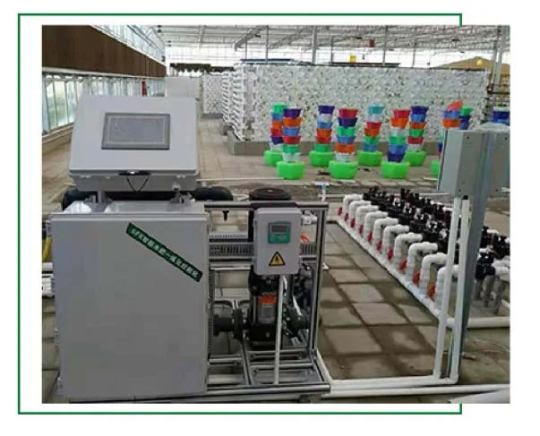
When determining the control area of an automated irrigation system, you first need to conduct a comprehensive analysis of irrigation needs.
This includes considering factors such as soil type, crop species, climate conditions, and more.
Different crops and soils require different amounts of moisture, so these factors must be fully considered when defining control areas.
0 notes
Video
youtube
(via limonSEO: Write A Broad Article on Automated Irrigation Systems)
0 notes
Text
Robotic In Agriculture
What is your all time favorite agriculture automobile? Robotics in Agriculture: A New Level of Precision and Efficiency• Robots are replacing human labor in agriculture, enhancing precision, efficiency, and sustainability.• Robotic fruit and vegetable pickers use computer vision and advanced manipulators to harvest produce with precision.• Autonomous harvesters use GPS and LiDAR sensors for…

View On WordPress
#agricultural#Agricultural Density#AI &ML in agricultural#Automation and Robotics#dailyprompt-2129#dailyprompt-2130#dailyprompt-2131#IOt in Agricultural#irrigation#modern agricultural#percision farming#soil water conservation
0 notes
Text
Useful Tips for Becoming a Successful Agriculture Investor
Agriculture investment refers to the allocation of financial resources, capital, or assets into various aspects of the agricultural sector with the expectation of generating a return on investment (ROI). This could mean investing monies in agriculture land for sale such as coconut land for sale in Sri Lanka, or other types of investments. It involves deploying funds in activities and projects related to agriculture for the purpose of profit, income generation, or long-term wealth creation. Agriculture investment can take many forms, including:
Farmland Acquisition: Purchasing agricultural land for the cultivation of crops or the raising of livestock. This can involve both large-scale and small-scale farming operations.
Infrastructure Development: Investing in the construction and improvement of infrastructure such as irrigation systems, roads, storage facilities, and processing plants to enhance agricultural productivity and efficiency.
Technological Advancements: Funding the development and adoption of agricultural technologies, such as precision agriculture, automation, and biotechnology, to improve crop yields and reduce operational costs.
Agribusiness Ventures: Investing in agribusinesses, such as food processing, distribution, and marketing, that are part of the agricultural value chain.
Research and Development: Supporting research initiatives related to agriculture to develop new crop varieties, pest-resistant strains, and sustainable farming practices.
Input Supply: Investing in the production and distribution of agricultural inputs like seeds, fertilisers, pesticides, and machinery.
Commodity Trading: Speculating on the future prices of agricultural commodities, such as grains, oilseeds, and livestock, through commodity markets or futures contracts.
Sustainable Agriculture: Funding practices and projects aimed at sustainable and environmentally responsible farming methods, which can include organic farming, agroforestry, and conservation efforts.
Rural Development: Supporting initiatives that improve the overall economic and social well-being of rural communities, often through investments in education, healthcare, and infrastructure.
Venture Capital and Start-ups: Investing in start-ups and companies focused on innovations in agriculture, such as vertical farming, aquaculture, or agricultural technology (AgTech).
Agriculture investment is important for food security, economic development, and job creation in many regions. However, it also comes with risks related to weather conditions, commodity price fluctuations, and market dynamics. Investors often conduct thorough research and risk assessments before committing their resources to agricultural ventures. Additionally, they may need to consider factors like government policies, environmental regulations, and social impacts on their investment decisions in the agricultural sector.
How to become a successful agriculture investor
Becoming a successful agriculture investor requires a combination of financial acumen, agricultural knowledge, and a strategic approach to investment. Here are some steps to help you become a successful agriculture investor:
Educate Yourself: Gain a strong understanding of the agricultural sector, including the different sub-sectors (crops, livestock, agribusiness, etc.). Stay updated on industry trends, market conditions, and emerging technologies.
Set Clear Investment Goals: Define your investment objectives, whether it is long-term wealth creation, income generation, or diversification of your investment portfolio.
Risk Assessment: Understand and assess the risks associated with agriculture investments, such as weather-related risks, market volatility, and regulatory changes, whether you are looking at land for sale or any other type of investment.
Develop a Diversified Portfolio: Diversify your investments across different agricultural sectors and geographic regions to spread risk.
Market Research: Conduct thorough market research to identify promising investment opportunities and potential demand for agricultural products.
Build a Network: Establish connections with farmers, agricultural experts, government agencies, and industry stakeholders who can provide insights and opportunities.
Financial Planning: Create a budget and financial plan that outlines your investment capital, expected returns, and cash flow requirements.
Select the Right Investment Type: Choose the type of agriculture investment that aligns with your goals, whether it is farmland, agribusiness ventures, or agricultural technology.
Due Diligence: Conduct comprehensive due diligence on potential investments, including assessing the quality of farmland, the financial health of agribusinesses, and the technology's potential for scalability and profitability.
Sustainable Practices: Consider investments in sustainable and environmentally responsible agriculture practices, as they are gaining importance in the industry.
Risk Management: Implement risk management strategies, such as insurance, to protect your investments from unforeseen events like natural disasters or crop failures.
Continuous Learning: Stay informed about changes in the agricultural industry and adapt your investment strategy accordingly.
Legal and Regulatory Compliance: Understand and comply with local, national, and international regulations and tax laws that may impact your agriculture investments.
Monitor and Adjust: Regularly review the performance of your investments and be prepared to make adjustments or exit underperforming ones.
Long-Term Perspective: Agriculture investments often require a long-term perspective, so be patient and avoid making impulsive decisions based on short-term market fluctuations.
Seek Professional Advice: Consult with financial advisors, agricultural experts, and legal professionals to ensure that your investments are structured and managed effectively.
Successful agriculture investment often involves a mix of financial expertise, industry knowledge, and a willingness to adapt to changing conditions. It is important to approach agriculture investment with a well-thought-out strategy, and to be prepared for both opportunities and challenges in this sector.
#Agriculture investment refers to the allocation of financial resources#capital#or assets into various aspects of the agricultural sector with the expectation of generating a return on investment (ROI). This could mean#or other types of investments. It involves deploying funds in activities and projects related to agriculture for the purpose of profit#income generation#or long-term wealth creation. Agriculture investment can take many forms#including:#●#Farmland Acquisition: Purchasing agricultural land for the cultivation of crops or the raising of livestock. This can involve both large-sc#Infrastructure Development: Investing in the construction and improvement of infrastructure such as irrigation systems#roads#storage facilities#and processing plants to enhance agricultural productivity and efficiency.#Technological Advancements: Funding the development and adoption of agricultural technologies#such as precision agriculture#automation#and biotechnology#to improve crop yields and reduce operational costs.#Agribusiness Ventures: Investing in agribusinesses#such as food processing#distribution#and marketing#that are part of the agricultural value chain.#Research and Development: Supporting research initiatives related to agriculture to develop new crop varieties#pest-resistant strains#and sustainable farming practices.#Input Supply: Investing in the production and distribution of agricultural inputs like seeds#fertilisers#pesticides#and machinery.
1 note
·
View note
Text
Why Should You Install A Smart Irrigation System?

Manually watering your lawn with a hose is washed up. Automated irrigation systems guesswork into when and how much to treat your lawn with water while you are away from home. It automates the watering system to run at specific times and control the amount of water according to the weather. For example, when it rains, the system skips irrigation days and avoids the waste of water as well as lowers your utility bill. Read more: https://qr.ae/pYRULc
0 notes
Text
tuesday again 9/3/2024
having a lot of fun with toddler enrichment activities in this household, until we bit through the bag and the foil and the water and hated that experience
listening
fun citypop version of Good Luck Babe! by Amandumb and Sakura Wine, “ganbatte” scans to “good luck babe” SCARY well. this is both off a tiktok my best friend sent me and the spotify recommended weekly
youtube
-
reading
quite frankly this makes me nervous and i am backing up my blogs as we speak. i sort of believe them when they say that we won't see a difference on the front end, but this is a HUGE migration. SOMETHING is going to go not perfectly.
William Greenleaf's TIME JUMPER (1980, 224p) and Joe Millard (my beloathed)'s Blood For A Dirty Dollar (1980 European reprint of a 1973 American book, 156p). thank you philip. time jumper is from a thrift store somewhere (possibly from the free book shelf at the umass engineering library) and the cowboy book is from ebay. they lied about the condition and the heavy smoke smell so i ended up getting it for free :) in no world is that a Very Good condition book!!!

time jumper! i do not think the back cover blurb (below) is very accurate.
COMBINED DESTINIES! One Earth of the far future, city dwellers live in a technologically advanced environment, while bands of nomads barbarically hunt and farm the plains. Hidden within the city is Erin, a crazed scientist, who is constructing a timejumper. On the plains is a nomad boy who quests after the city's secrets. Unknown to both, an evil force works to keep them apart, for it knows that if they ever meet, a new Earth destiny would be inevitable!
i looooove a bubble city. i love long lingering shots of technology and city-scapes and city politics. i would not call the nomads barbarians, bc they are a trading society who set up crop irrigation in their seasonal fields and have a giant traveling library with card catalogue. i would also not call Erin crazed or hidden, bc he is the richest man in the city. reclusive, yes. single-minded, yes. pretty sane though. he is a little person and i think the book handled this fairly deftly for 1980? most of his obstacles are physical and not societal. finally, the evil force is not working to keep them apart bc it doesn't even know about the outside kid. they mostly just want to stop anyone from leaving.
now that we know the back blurb is lies, what's the deal with this book? mostly wrestling with how automation leads to a loss of purpose and flattening of culture, breaking cycles, cyclical natures of histories thereof, and repeating old sins. however, one of the more frustrating endings ive ever read with the very last paragraph containing the suicide of a minor character. we simply didn't fucking need that last paragraph.
i found the dialogue a little bland but book overall quite evocative. it felt like a sixties scifi show constructed from castoff theater sets. it felt like this screenshot from rollerball. a lot of shapes. a lot of giant gardens. a lot of flattened textures.

i also liveblogged the cowboy book here. we've previosuly looked at the one with the balloon and the jailbreak but this is the one with the mad englishman and the imported castle and the missing scientists. i love a description of Legally Not Lee van Cleef Because We Don't Have A Royalty Agreement
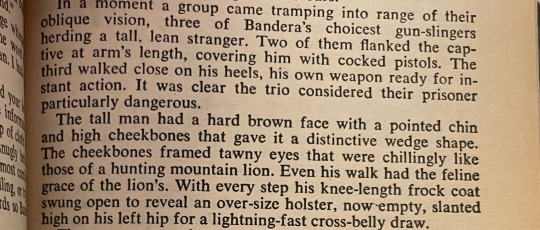
-
watching
X-Men: First Class (2011, dir. Vaughn) was way more fun than i was expecting??? it's fun to watch these with my bestie's husband who is a fairly intense x-men fan and Will pause the movie for several minutes to explain why a specific character's death was fucking bullshit or answer one of my stupid costuming questions
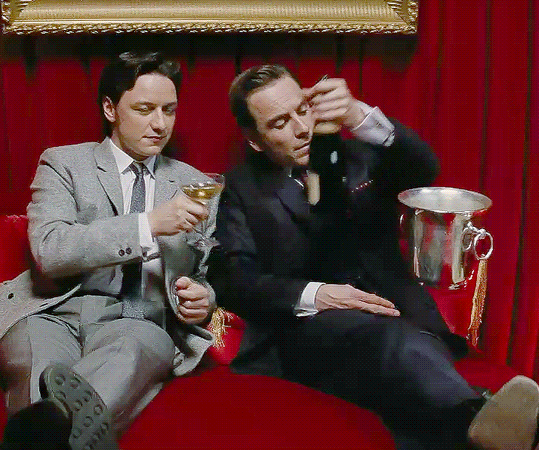
-
playing
the new mesoamerican fire-aligned nation of Natlan is out in genshin impact! VERY beautiful region even though i think it is a crime, to me personally, to show me a village of observation balloons and then tell me i can't actually go there for six weeks until the next patch.

this is a little bit more of a frustrating experience bc my tolerance for the least little thing going wrong is at record lows. once you hit 100% on a map region it feels more like a true 100% ing the area, which is a little scary bc this usually means you have anywhere from 10-20% more Stuff to do and find and collect. one quest is straight up bugged for me (very unusual) and i cannot get a specific mechanic (the yunkasaur, the little green pokemon lookin motherfucker above, flame spitting) to fire with any sort of accuracy. why have a sight and a center pip if you CANNOT aim it.
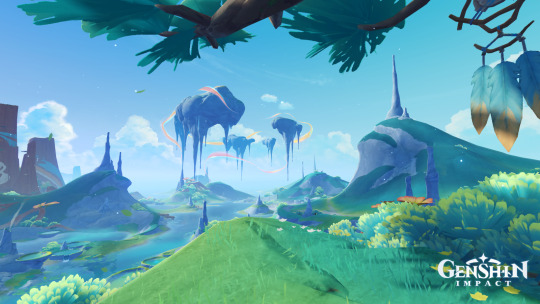
some parts of the map look a little more seussical than others.

to whoever made sure this observation balloon lined up with the window when you entered this waypoint building, i see you. thank you.
-
making
fallow week.
26 notes
·
View notes
Text
Irrigation Technology Can Get Complicated
Modern irrigation does not age well. Old fashioned irrigation systems were quite thorough, and technically sustainable. They broadcast generous volumes of water over any vegetation that required it. Their systems were too simple to need much adjustment. Their metallic composition was very resilient. That is why so many old systems were in service for so long. Some continue to function. However,…

View On WordPress
0 notes
Text

VFD Circuit Design - Variable Frequency Drives
The VFD Exchange
#variablefrequencydrive#vfds#acdrive#industrial#controls#acmotor#speed#torque#inverter#drives#electrical#electric#automation#voltage#current#horsepower#amperage#phase#manufacturing#mining#quarry#farming#agriculture#hvac#irrigation#wastewater#maritime#ports#oil#pump
1 note
·
View note
Text
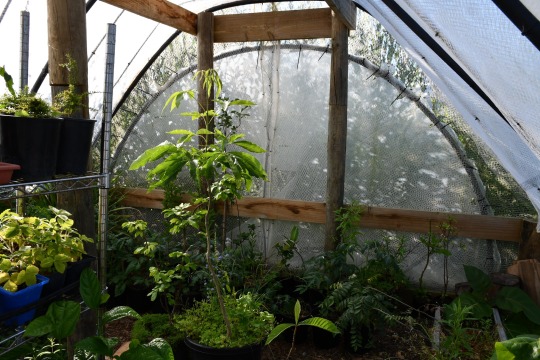


Kia ora! Just a wee re-introduction
I'm just another solarpunk in Aotearoa looking for other like-minded friends, inspiration, and advice on other ways I can green up my life. I love sewing, baking, making, gardening, and animals.
I live in an off-grid tiny home I built with my partner in 2016 out of wood and second-hand windows/doors/appliances. We run off solar power, rain water, a composting toilet, and try to repair, mend, make, borrow, and buy 2nd hand or local. Our meat is all hunted, which here in Aotearoa is a huge help for our environment as our only native mammals are seals and bats. Everything else is a pest. We also grow a lot of our own fruit and veggies, but the garden is still a work in progress. This year, i have a new wing of the veggie garden built, but I still have so much work to do around the herb and fairy garden.
I'm looking at irrigating the garden and automating the process. I saw something about https://www.home-assistant.io/ online but would love any advice you might have. I'd like to automate and chart my watering as well as integrate moisture monitors and a weather monitoring system.
I have an electric bike and an old 1996 honda crv. I'd like to switch to an electric vehicle, something like a Pickman 4x4 or another small farm vehicle, as I only need to get to the village bus stop, neighbouring farms, and the occasional trip into town via back roads.
Clothes are me-made with 2nd hand materials, mostly from the dump shop. I've helped start a collection point for alternative recycling like bottle lids and tetrapaks, a library of things, and a community workshop. We are working towards a bike repair hub and time bank but it might be a couple years before they are operational.
Please share all your inspiration, book recommendations, and thoughts around other ways I can make an impact in my community 😊
16 notes
·
View notes
Text

Jujutsu Kaisen characters & Industrial revolution (AU) Pt.1 – Nanami Kento POV, the hopeless blacksmith. A multi part series.
I fear the time has come when my work has become rendered useless by the people, and I am unappreciated simply because I am 'less' than a machine. Yes, I may produce 'less,' but what I 'lost,' people used to gain in value and sentimentality. The Industrial Revolution, lasting around 80 years, significantly reduced the demand for hand-made goods and services such as tailoring, irrigation, and sword-making, which happens to be Nanami's specialty. (Check your history and economics textbooks, kids.) During this period, most blacksmiths were deemed ‘redundant,’ as replacing items when broken became more reasonable and cheaper than repairing them. Yet in the quiet, these sacred skills persisted, anticipating every moment, counting down its return to the world.
I fear the silence has enraptured me, drenching my soul to the thousandth degree.
My eyes darted around the room, taking in the sight of tools strewn around the mountain of unfinished projects. The decline of clients sapped my motivation and the acrid flames from the crucibles dusted my nostrils in a haze of ash. I walked towards the chair at the other side of the room that had served me well all these years, its wooden frame as worn as my spirit. Stuck in this monotony of life. I traced my fingers over the well-worn instruments, their familiarity a stark contrast to the world of chaos beyond these four walls that I’ve surrounded myself in. I wonder how long I can hold on.
The clang of metal on metal, the hiss of steam, and the heat of the forge used to be the heartbeat. Now, a deafening silence enraptured the place like a heavy cloak, broken only by the distant humming of automated machinery. As times change, I struggle with doubts, even within myself, questioning the longevity of my lifestyle. If I wish to retire, I must adapt to the times and conform to the ebb and flow of humanity.
I have found something to busy myself with, assisting the locals in their financial decisions, though my own, in turn, have been questionable. As I watched them, their careful budgeting and pragmatic choices struck me. Each decision they made, each penny saved and spent wisely, seemed to carry a weight of survival that I could only admire from afar. Farmers transition to tractors, coachmen to bus drivers, caterpillars to butterflies. Am I falling behind?
As I attempted to clear my weary head, I observed the jasmine I planted long ago had found the courage to bravely spread its vines, tangling itself in the depths of the rusty metal trellis perched against the bricked wall. Meanwhile, my osmanthus and chrysanthemum have taken their final drops of water, signaling the end of my tea supply. Even my possessions seem to be slipping away.
Laughs and giggles echo regularly from the speakeasy across the street, where actors, actresses, singers and dancers gather, filling the bar with a reservoir of talent. A reminder of how I used to live, on a hunt for fame and popularity. I had succeeded once, too. The crackling timbre of gravel against tires revealed a car, sleek and shiny, its engine purring like a contented predator. I expected it to pass by like all the others, yet its passengers bearing gold and medallions happened to be seeking a temporary escape. I don’t like to admit it, however, I used to be like that once.
I still remember when I received my first paycheck. I got cocky, lazy, unknowing of the repercussions that lied beyond the surface. Blinded by the allure of fame. How my father’s blacksmithing passion burned in the ashes right before my eyes, how he disappeared from the face of the earth, not remembering the name of his own son.
The door swung open, and a polished shoe touched the pavement with deliberate grace. Slowly, he emerged, straightening to his full height, his tailored suit catching the light just right. His eyes, hidden behind dark circular sunglasses, stood tall as if he owned the world—or was about to. His pearly white locks swayed with the gentle gusts of wind. His peculiar outfit left no room for misinterpretation, reminding me of a secret society member, those in the Edo period from way back when. Three consecutive knocks interrupted my pensive train of thought. Clearly, the man hadn’t seen the ‘closed’ sign on the door. I silently screw myself for only writing the text in Danish. “I am closed, go home, Gojo.”
I knew him, mostly as the piercing icy blue eyed man who had been loitering around the shop for three days in a row now. I half expected him to add to the collection of the ‘no swords, no shields’ signs that were attached on the notice post by hammer and nail. Ever since the mass blacksmith boycott, he found an opportunity to speak out against the ‘old school’ way of fighting, promoting ‘Jujutsu Sorcery’ as an alternative. I had considered it once, learning how to harness this ability to visualize cursed spirits that I was entrusted with, but I try to ignore them as best as possible due to bad experiences on the field in my younger years.
The Jujutsu corporate world holds far too much ambiguity as we were blind to laboring in pyramid schemes. Just stooges to a bigger picture. Much to my dismay, the green glasses I wear are not only for blacksmithing but also for avoiding eye contact with dehumanized figures of various colors, shapes and sizes. They also irritatingly slide down my nose bridge.
"Sir Nanami! I'd love to have your expertise back in the wondrous field of Jujutsu training. I've got- I mean, I have acquired three new recruits who would benefit from your mentoring."
Despite our history, his tone carried a forced formality. It was a sound that echoed from a child's mouth—squeaky and awkward—from behind the door.
"M-Mister Nanami?" The voice stuttered. I heard Gojo's quiet instructions to the kid, coaching him on what to do next. An eager student, I mused to myself. "Look at this!" His fists glowed with luminescent streaks of black and blue, untamed cursed energy. I couldn't deny it was the start of something unique. This pink haired, pure spirited boy that Gojo had brought in... he was unlike the others.
“Gojo, you don’t understand. I have a life here. Depleting or not, it’s my duty to remain.” I argued, coming up with every reason to deny his offer. Though he seemed to know that I have no sufficient meaning to stay here.
“Nanami, I-” Gojo interjected. Suddenly, a loud crash reverberated through the shop as Yuji’s cursed energy surged uncontrollably, knocking over a shelf of tools. My senses heightened immediately, recognizing the distinct energy signature. This was not just an accident. The outside air grew heavy with a palpable tension, as if the atmosphere itself was holding its breath. I glanced at Gojo, who was already on alert, his playful demeanor replaced by a serious intensity.
“What did you do, kid?” I asked Yuji, my voice calm but edged with urgency.
“I-I don’t know!” Yuji stammered, eyes wide with panic. “I think I might have accidentally triggered something…”
Before he could finish, the ground beneath us rumbled, and a low, menacing growl echoed from outside. A wave of cursed energy, darker and more malevolent than anything I had felt in years, washed over us.
“Get ready,” Gojo muttered, his eyes flickering with anticipation. “It’s here.”
Reflexes honed from years of experience kicked in. I grabbed my blunt sword, its blade wrapped in bandages. In a fluid motion, I positioned myself in front of Yuji and Gojo, my protectiveness kicking in instinctively. No matter the level of skill the two had, I will always put myself at the forefront.
"Sorcery never goes away from your body," I thought, the weight of the moment grounding me. "It's your prerogative to use it in times of need or hide it away. And for the first time in years, I have chosen the former."
The door shuddered under a heavy blow, and I braced myself. The silence before the storm had ended.
And this is merely the beginning.
👏End of Part one 👏 Goodness, that was a wild ride, I'm almost sad to be leaving y'all on a cliffhanger like this! Hope my second ever fan fiction was enjoyable.
Thank you to my beta readers: Panda and JuwelPK! Part two coming soon. Coming from the POV of Yuji Itadori.
#jjk#kento nanami#jjk nanami#jujutsu kaisen#jjk kento#nanami kento#kento nanami headcanons#blacksmith#kento nanami au#alternate universe#story#part one#keyrey#jjk fanfic#fanfiction#fanfic#industrial revolution#jujutsu nanami#papamin au#gojo saturo#jjk gojo#jjk yuji#yuji itadori#jjk itadori
23 notes
·
View notes